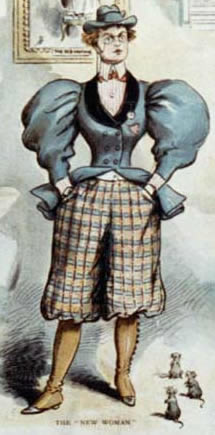History 3070
Women in Progressive Reform

| The decades between 1890 and 1920 constituted a period
of such vital reform activity that historians have dubbed them "the
Progressive era." In this age, millions of Americans organized in
voluntary associations to devise solutions to the myriad problems
created by industrialization, urbanization, and immigration.
Although many of these wildly energetic reformers united in the Progressive party of 1912--with Theodore Roosevelt as their presidential candidate--progressivism was not a single movement but a collection of coalitions agitating for changes that often seemed to contradict each other. For instance, many progressive reforms aimed to increase democracy in America. These included women's suffrage, the direct election of senators, the availability of the referendum, and the right to recall representatives whose behavior in office did not satisfy their constituents. On the other hand, many progressives hoped to increase efficiency in government and believed that they could do so by diminishing the power of elected officials and installing "experts" in their stead. This impulse found expression, for example, in progressive campaigns to hire city managers in the place of elected mayors or city councils. Government by un elected "experts," of course, undermined democracy and thus set one set of progressive reforms at odds with another. One especially remarkable aspect of progressivism was the full participation of American women. Denied the vote through most of the period, women nevertheless exercised what they saw as their rights as citizens to shape public policy and create public institutions. Acting through such organizations as the Young Women's Christian Association, the National Consumers' League, professional associations, and trade unions, female reformers were at the forefront of the movement against child labor as well as the women's suffrage campaign. They won minimum wage and maximum hours laws for women workers, public health programs for pregnant women and babies, improved educational opportunities for both children and adults, and an array of social welfare measures at the local, state, and federal levels. They even succeeded in creating the Children's Bureau (1912) and the Women's Bureau (1920) in the federal Department of Labor. All in all, women's activism created a more intimate relationship between citizens and their government and laid part of the foundation for the welfare state that would take definitive shape during Franklin Roosevelt's presidency in the 1930s. |
Readings:
- From the National Women's history Museum: Reforming Their World: Women in the Progressive Era
- "The Ambiguous Legacies of Women Progressives)" http://www.oah.org/pubs/magazine/progressive/muncy.html
- Kerber and DeHart: choose any essay among Sicherman, Pascoe, Gilmore, Yung, Orleck, Gordon, Hall
- The Jane Addams (also the Hull House Museum)
- Florence Kelley Papers, from the Open Collections Project at Harvard (also essay by Kish Sklar)
- Ida B. Wells-Barnett, from the Mississippi Writers Project (also essay by Schechter)
- The Alice Paul Institute (also essay by Cott)